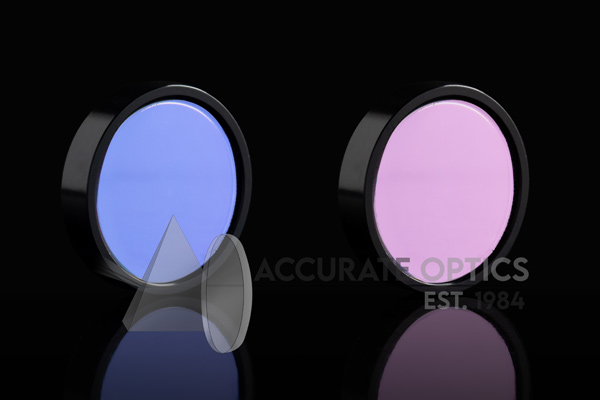Advancing Aerospace Optics: Role of Optical Thin Film Coatings
In the boundless skies of aerospace technology, precision and reliability are non-negotiable. Optical Thin Film Coatings emerge as indispensable components, wielding immense influence in enhancing the performance, durability, and functionality of optical systems within this critical industry. Let’s soar into the realm of aerospace applications and unveil the pivotal role played by Optical Thin Film Coatings in elevating aerospace optics to new heights.
Precision in Aerospace Optics
Aerospace applications demand optical systems that excel in clarity, accuracy, and resilience. Optical Thin Film Coatings, crafted with nano-scale precision, cater to these stringent requirements by fine-tuning light properties and ensuring optimal performance in the challenging aerospace environment.
The Significance of Thin Film Coatings
- Enhanced Light Transmission: Coatings minimize reflection and maximize light transmission, ensuring clear and accurate imaging for navigational aids, sensors, and cameras used in aerospace.
- Durability and Protection: They shield optical components from extreme temperatures, abrasion, and corrosive elements encountered in aerospace environments, prolonging equipment lifespan.
- Weight and Space Efficiency: With thin and lightweight designs, these coatings offer efficiency crucial in aerospace applications where every gram matters.
Applications in Aerospace
- Imaging and Surveillance Systems: Thin Film Coatings optimize lenses, mirrors, and imaging sensors, providing high-resolution images critical for reconnaissance and surveillance purposes.
- Navigation and Communication: Instruments relying on precise light manipulation, such as laser communication systems, benefit from coatings that ensure accurate signal transmission.
- Satellite and Spacecraft Optics: Coatings on lenses and mirrors of satellites and spacecraft enhance imaging and sensing capabilities, aiding in scientific observations and data collection.
Advancements Driving Innovation
Innovations in Thin Film Coating technologies continue to shape aerospace optics. Advancements focus on multifunctional coatings, wider spectral ranges, and increased durability, catering to the evolving demands of space exploration and aviation.
Collaborative Development and Testing
Extensive collaboration between coating manufacturers, aerospace engineers, and researchers is pivotal. Rigorous testing ensures that these coatings withstand extreme conditions and perform flawlessly in the harsh aerospace environment.
Future Prospects
The future of aerospace optics relies significantly on advancements in Thin Film Coatings. Expectations include coatings that exhibit enhanced spectral performance, improved resistance to radiation, and adaptability to evolving aerospace technology.
Conclusion:
Optical Thin Film Coatings emerge as indispensable assets in advancing aerospace optics. Their role in enhancing clarity, durability, and efficiency within optical systems is fundamental to the success and reliability of aerospace technology. As innovations propel the industry forward, these coatings remain integral, ensuring that the sky’s limit is merely a starting point in aerospace exploration.
Important FAQs:
1. What is the Role of Optical Thin Film Coatings in Aerospace Optics?
– Optical thin film coatings play a crucial role in advancing aerospace optics by enhancing the performance, durability, and functionality of optical components used in various aerospace applications.
2. How Do Optical Thin Film Coatings Improve Aerospace Optics?
– Optical thin film coatings improve aerospace optics by reducing reflection losses, increasing light transmission, enhancing thermal stability, and providing protection against harsh environmental conditions encountered in aerospace environments.
3. What Types of Optical Thin Film Coatings are Used in Aerospace Applications?
– In aerospace optics, a variety of thin film coatings are employed, including anti-reflective coatings, high reflectivity coatings, protective coatings, dichroic coatings, and thermal control coatings, each serving specific purposes to meet the demands of aerospace environments.
4. What is the Significance of Anti-Reflective Coatings in Aerospace Optics?
– Anti-reflective coatings are essential in aerospace optics to minimize reflection losses on optical surfaces, thereby improving the efficiency of optical systems and enhancing visibility in critical aerospace applications.
5. How Do Protective Coatings Benefit Aerospace Optical Components?
– Protective coatings safeguard aerospace optical components against harsh environmental factors such as extreme temperatures, humidity, abrasion, and chemical exposure, ensuring long-term reliability and performance in aerospace operations.
6. Can Optical Thin Film Coatings Enhance the Performance of Satellite Optics?
– Yes, optical thin film coatings can significantly enhance the performance of satellite optics by improving light transmission, reducing weight, increasing thermal stability, and providing protection against radiation and micrometeoroids encountered in space.
7. Are Dichroic Coatings Utilized in Aerospace Optics?
– Dichroic coatings are commonly used in aerospace optics for spectral filtering and wavelength separation applications, such as multispectral imaging, remote sensing, and laser communication systems deployed on aircraft and spacecraft.
8. How Do Thermal Control Coatings Contribute to Aerospace Optical Systems?
– Thermal control coatings help regulate the temperature of aerospace optical systems by managing heat absorption and dissipation, ensuring optimal performance and stability in extreme thermal environments encountered during aerospace missions.
9. What Challenges Do Optical Thin Film Coatings Address in Aerospace Optics?
– Optical thin film coatings address challenges such as reducing weight, improving efficiency, enhancing durability, and increasing functionality of aerospace optical components, enabling the advancement of aerospace technology and exploration.
Thank you for exploring the role of optical thin film coatings in advancing aerospace optics with us! If you have any further questions or topics you’d like to learn about, feel free to reach out.








